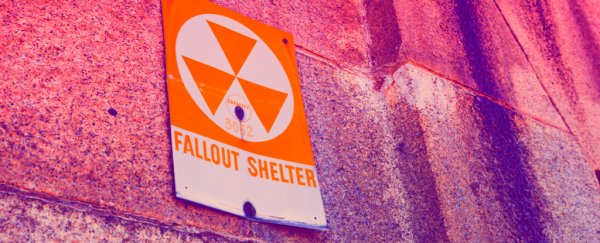On 13 January, the state of Hawaii spent 38 minutes in terror after a text alert mistakenly warned of an incoming nuclear missile attack.
If you heard about the mistake and wondered what you would or should do if you learned a nuclear bomb was heading your way, you're not alone.
It has been more than 30 years since schools in the United States had "duck and cover" drills for schoolchildren, and preparing for a nuclear attack isn't something most people are familiar with.
Today, nuclear threats are more likely from rogue states and terrorists, not the Soviet Union.
But we should still be worried about nuclear threats we're facing - and, with a president promising to rain down "fire and fury", the threats we're making.
So if an attack is imminent, what do you do?
If you're unlucky (or lucky) enough to be at Ground Zero, your troubles would be over almost instantly.
Anyone at or near the centre of a nuclear explosion would be killed immediately by the fireball, searing radiation or the blast wave.
Otherwise, what you should do depends on how far away you are from the explosion.
"If you see a flash that's brighter than anything else that you've ever seen and it feels like the sun, that's probably a nuclear explosion. There aren't that many things that fit that category," says nuclear historian Alex Wellerstein of the Stevens Institute of Technology.
"Don't stand there and look dumbfounded because you may have about 10 to 15 seconds to do something. And what you do in that 10 to 15 seconds may actually save your life."
According to the Department of Homeland Security, if you can see the nuclear flash or if you have enough warning beforehand, take shelter immediately.
Even a blast shelter would not be able to keep you safe from a direct hit by a nuclear weapon. But if you're far enough away from the centre of the explosion, sheltering in place can keep you shielded from flying glass or falling objects.
If you're not in immediate danger, Wellerstein says the next thing to do is to move to a sheltered space or as far underground as you can, because after the explosion comes the fallout.
During a nuclear explosion, dirt, debris and other particles are forced upward into the atmosphere in a giant cloud.
As wind pushes the cloud away from the blast site, radioactive ash falls out of the cloud. Fallout can arrive at Ground Zero within an hour, and it's most dangerous within the first 48 hours of detonation.
But its radiation decays exponentially, which means it loses its intensity fairly rapidly. After two weeks, the radiation from the explosion is about 1 percent of its initial level.
It's important to take shelter immediately to keep yourself from being exposed to high doses of radiation at the beginning of the explosion.
When most people think about a nuclear explosion, they probably imagine a global wasteland and the end of life as we know it.
If one, or even two nuclear bombs were to be detonated in the United States, it would be one of the worst things to happen to this country - but it could still recover.
Government response would look a lot like the natural disaster response you see from FEMA, which is what the office of Civil Defence Administration from the 1950s was folded into.
2018 © The Washington Post
This article was originally published by The Washington Post.
